| Date | Text | |
|---|---|---|
30 Nov 1892

Henry Luke Bolley |
Henry Luke Bolley (biology) Henry Luke Bolley discovers a method of treating smut with formaldehyde. |
|
30 Nov 1892

Hans Goldschmidt |
Hans Goldschmidt (chemistry) Hans Goldschmidt discovers the thermite reaction. |
|
30 Nov 1892

Alfred Werner |
Alfred Werner (chemistry) Alfred Werner discovers the octahedral structure of cobalt complexes, thus establishing the field of coordination chemistry. |
|
30 Nov 1892

Eduard Suess |
Eduard Suess (earth sciences) Eduard Suess postulates the former existence of the Tethys Sea. |
|
30 Nov 1892

Mary Kingsley |
Mary Kingsley (exploration) Mary Kingsley lands in Sierra Leone on the first of her journeys through Africa in the interests of anthropology and natural history. |
|
30 Nov 1892
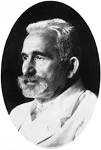
Emil Kraepelin |
Emil Kraepelin (medicine) Emil Kraepelin introduces the concept of dementia praecox in the classification of mental disorders, distinguishing it from mood disorder in his Lehrbuch der Psychiatrie (4th edition). |
|
30 Nov 1892

Ádám Politzer |
Ádám Politzer (medicine) Ádám Politzer describes otosclerosis for the first time. |
|
30 Nov 1892

Vladimir Bekhterev |
Vladimir Bekhterev (medicine) Vladimir Bekhterev describes Ankylosing spondylitis. |
|
30 Nov 1892

Wilhelm Wien |
Wilhelm Wien (physics) Wilhelm Wien formulates Wien's displacement law. |
|
30 Nov 1892
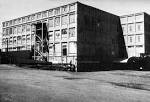
Pacific Coast Borax Company |
Pacific Coast Borax Company (technology) Refinery for Pacific Coast Borax Company in Alameda, California, designed by Ernest L. Ransome, is the first major reinforced concrete building in the United States. |
|
30 Nov 1892
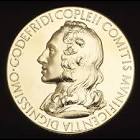
Copley Medal |
Copley Medal (awards) Copley Medal: George Gabriel Stokes |
|
30 Nov 1892
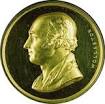
Wollaston Medal |
Wollaston Medal (awards) Wollaston Medal for Geology: Nevil Story Maskelyne |
|
02 Jan 1893

Webb C. Ball |
Webb C. Ball (technology) Webb C. Ball introduces railroad chronometers which become the general railroad timepiece standards in North America. |
|
02 Jan 1893

John Obadiah Westwood |
death John Obadiah Westwood John Obadiah Westwood (born 1805), English entomologist. |
|
07 Jan 1893
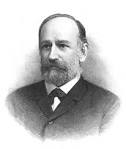
Jožef Stefan |
death Jožef Stefan Jožef Stefan (born 1835), Slovenian physicist and mathematician. |
|
01 Feb 1893
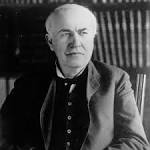
Thomas Edison |
Thomas Edison (technology) Thomas Edison finishes construction of the first motion picture studio in West Orange, New Jersey. |
|
02 Feb 1893
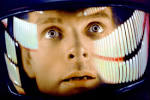
Movie close-up |
Movie close-up In 1893, the first-ever movie close-up was filmed at Thomas Edison's studio in West Orange, NJ. The film shows comedian Fred Ott sneezing. |
|
03 Feb 1893

Gaston Julia |
birth Gaston Julia Gaston Julia (died 1978), French mathematician. |
|
11 Feb 1893

János Csonka |
János Csonka (technology) János Csonka and Donát Bánki apply for a patent for the carburetor in Hungary. |
|
23 Feb 1893

Diesel engine patent |
Diesel engine patent In 1893, Rudolf Diesel received a German patent for the diesel engine. His engine burns fuel oil rather than gasoline, and uses high compressed of the gases in the cylinder rather than a spark to ignite the fuel. Diesel engines were used widely in Europe for their efficiency and power, and are still used today in most heavy industrial machinery. Diesel cars never caught on in the U.S., partly because the diesel engine's greater efficiency is counter-balanced by its higher emissions of soot, odor, and air pollutants. However, some environmentalists argue that in spite of the diesel engine's exhaust pollution, its fuel efficiency may make it more environmentally sound than the gasoline engine in the long run. |
|
23 Feb 1893

Rudolf Diesel |
Rudolf Diesel (technology) Rudolf Diesel receives a patent for the diesel engine. In this year he also publishes his treatise Theorie und Konstruktion eines rationellen Wärmemotors zum Ersatz der Dampfmaschine und der heute bekannten Verbrennungsmotoren. |
|
27 Feb 1893

Ralph Linton |
birth Ralph Linton Born 27 Feb 1893; died 24 Dec 1953 at age 60. American anthropologist who had a marked influence on the development of cultural anthropology. After combat in France during World War I, he received a Ph.D. from Harvard (1925). In the early 1920's he did fieldwork in Polynesia. He introduced the terms "status" and "role" to social science and influenced the development of the culture-and-personality school of anthropology. His works, such as The Study of Man (1936) and The Tree of Culture (1955), are regarded more as popularizations of anthropology than as original scholarship. |
|
28 Feb 1893

Carborundum |
Carborundum In 1893, carborundum was patented by Edward G. Acheson of Monongahela, Penn. He had discovered it accidentally while trying to make artificial diamonds. He had dissolved carbon into molten corundum (a mixture of powdered coke and clay) in an electric furnace, and that yielded dark, hard, gritty crystals. He named the new material carborundum, and found it was one of the hardest industrial substances (second only to diamond), which made it an excellent abrasive material. In 1894, he started the Carborundum Company in Monongahela to produce grindstones, knife sharpeners, and various abrasives. Later, on 19 May 1896, obtained a patent for an electric furnace, suitable for making carborundum. |
|
28 Feb 1893

Edward Goodrich Acheson |
Edward Goodrich Acheson (technology) Edward Goodrich Acheson patents the method for making the abrasive silicon carbide powder. |
|
29 Apr 1893

Harold Urey |
birth Harold Urey Harold Urey (died 1981), American winner of the Nobel Prize in Chemistry. |
|
30 Apr 1893
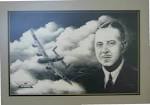
Roy Chadwick |
birth Roy Chadwick Born 30 Apr 1893; died 23 Aug 1947 at age 54. British aeronautical engineer, who during WW I, designed the Avro 504 trainer. His other designs include the Baby (a truly light aircraft), Avian, and the Anson (used for RAF coastal reconnaissance). In WW II, he developed the Manchester and the famous Lancaster heavy bombers. Later, he worked jet-propelled planes, the Tudor and Ashton. He died in a test flight crash of the Tudor II prototype, near Woodford airfield, Manchester. |
|
01 May 1893

rolling lift bridge |
rolling lift bridge (technology) William Scherzer (dies July 20, 1893) files a patent for his design of rolling lift bridge. |
|
09 May 1893

Kinetoscope |
Kinetoscope (technology) Edison's 1½ inch system of Kinetoscope is first demonstrated in public at the Brooklyn Institute. |
|
13 Jun 1893

Alan A. Griffith |
birth Alan A. Griffith Alan A. Griffith (died 1963), English stress engineer. |
|
21 Jun 1893
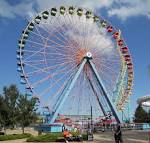
Ferris Wheel |
Ferris Wheel (technology) The first Ferris Wheel opens to the public at the World's Columbian Exposition in Chicago. |
|
09 Jul 1893
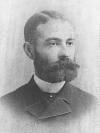
Daniel H. Williams |
Daniel H. Williams (medicine) Daniel H. Williams completes the first successful open heart surgery. |
|
11 Jul 1893
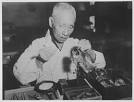
Kokichi Mikimoto |
Kokichi Mikimoto (biology) Kokichi Mikimoto, in Japan, develops the method to seed and grow cultured pearls. |
|
25 Jul 1893

Corinth Canal |
Corinth Canal (technology) Completion of the Corinth Canal in Greece. |
|
05 Aug 1893
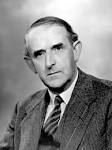
Sydney Camm |
birth Sydney Camm Sydney Camm (died 1966), English aircraft designer. |
|
15 Aug 1893
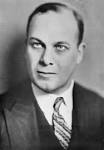
Leslie Comrie |
birth Leslie Comrie Born 15 Aug 1893; died 11 Dec 1950 at age 57. Leslie (John) Comrie was a New Zealand astronomer and pioneer in the application of punched-card machinery to astronomical calculations. He joined HM Nautical Almanac Office (1926-36), where he replaced the use of logarithm tables with desk calculators and punched card machines for the production of astronomical and mathematical tables. This made scientific use of these machines, made originally for only business uses. In 1938, he founded the Scientific Computing Service Ltd., the first commercial calculating service in Great Britain, to further his ideas of mechanical computation for the preparation of mathematical tables. His use of card processing systems prepared the way for electronic computers. |
|
16 Aug 1893

Jean-Martin Charcot |
death Jean-Martin Charcot Jean-Martin Charcot (born 1825), French neurologist. |
|
17 Aug 1893

Wilhelm Maybach |
Wilhelm Maybach (technology) Wilhelm Maybach patents the spray nozzle carburetor in France. |
|
24 Aug 1893

Haim Ernst Wertheimer |
birth Haim Ernst Wertheimer Haim Ernst Wertheimer (died 1978) German Jewish biochemist. |
|
25 Aug 1893
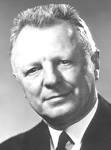
Henry Trendley Dean |
birth Henry Trendley Dean Henry Trendley Dean (died 1962), American dental researcher. |
|
29 Aug 1893

Zipper patent |
Zipper patent In 1893, U.S. patent No. 504,038 was issued to Whitcomb L. Judson for a "Zipper Clasp Locker or Unlocker for Shoes." |
|
16 Sep 1893
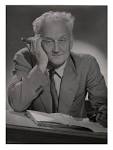
Albert Szent-Györgyi |
birth Albert Szent-Györgyi Albert Szent-Györgyi (died 1986), Hungarian physiologist, winner of the Nobel Prize in Physiology or Medicine. |
|
05 Oct 1893
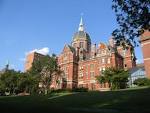
Johns Hopkins Medical School |
Johns Hopkins Medical School (medicine) Johns Hopkins Medical School opens in the United States. |
|
23 Oct 1893

Ernst Öpik |
birth Ernst Öpik Ernst Öpik (died 1985), Estonian astronomer and astrophysicist. |
|
03 Nov 1893

Edward Adelbert Doisy |
birth Edward Adelbert Doisy Edward Adelbert Doisy (died 1986), American biochemist, winner of the Nobel Prize in Physiology or Medicine. |
|
13 Nov 1893

Edward A. Doisy |
birth Edward A. Doisy Born 13 Nov 1893; died 23 Oct 1986 at age 92. Edward Adelbert Doisy was an American biochemist who shared (with Henrik Dam) the 1943 Nobel Prize for Physiology or Medicine for his isolation and synthesis of vitamin K, a substance that encourages blood clotting (1939), used in medicine and surgery. With the embryologist Edgar Allen (1922-34), he developed assay techniques that facilitated research on sex hormones. Doisy and his associates isolated the sex hormones estrone (theelin, 1929; the first estrogen to be crystallized), estriol (theelol, 1930), and estradiol (dihydrotheelin, 1935). In 1936-39 he isolated two forms of the vitamin, (K1 from lucerne seed and K2 from fish meal, in a pure crystalline form), determined their chemical structures, and synthesized the vitamin. |
|
01 Dec 1893

Eugène Gabritschevsky |
birth Eugène Gabritschevsky Eugène Gabritschevsky (died 1979), Russian biologist and artist. |
|
04 Dec 1893
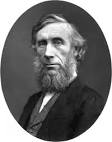
John Tyndall |
death John Tyndall John Tyndall (born 1820), British physicist. |
|
06 Dec 1893

Rudolf Wolf |
death Rudolf Wolf Rudolf Wolf (born 1816), Swiss astronomer |
|
12 Dec 1893

Aerial photography |
Aerial photography In 1893, the first U.S. patent for aerial photography was issued to Cornele B. Adams of Augusta, Ga. (No. 510,758). His method of photogrammetry could produce a topographic map by means of photos of the same tract taken from different points. The patent refers to aerial photographs taken automatically at a predetermined height from an unmanned stationary balloon on a tether rope at each end of a measured base line on the land. "The pictures obtained can be converted into topographic maps, to delineate not only the horizontal positions and distances of the objects correctly, but from which the altitude of the objects can be quickly and accurately ascertained, and such results obtained without the aid of other field instruments." |
|
28 Dec 1893

Richard Spruce |
death Richard Spruce Richard Spruce (born 1817), English botanist. |